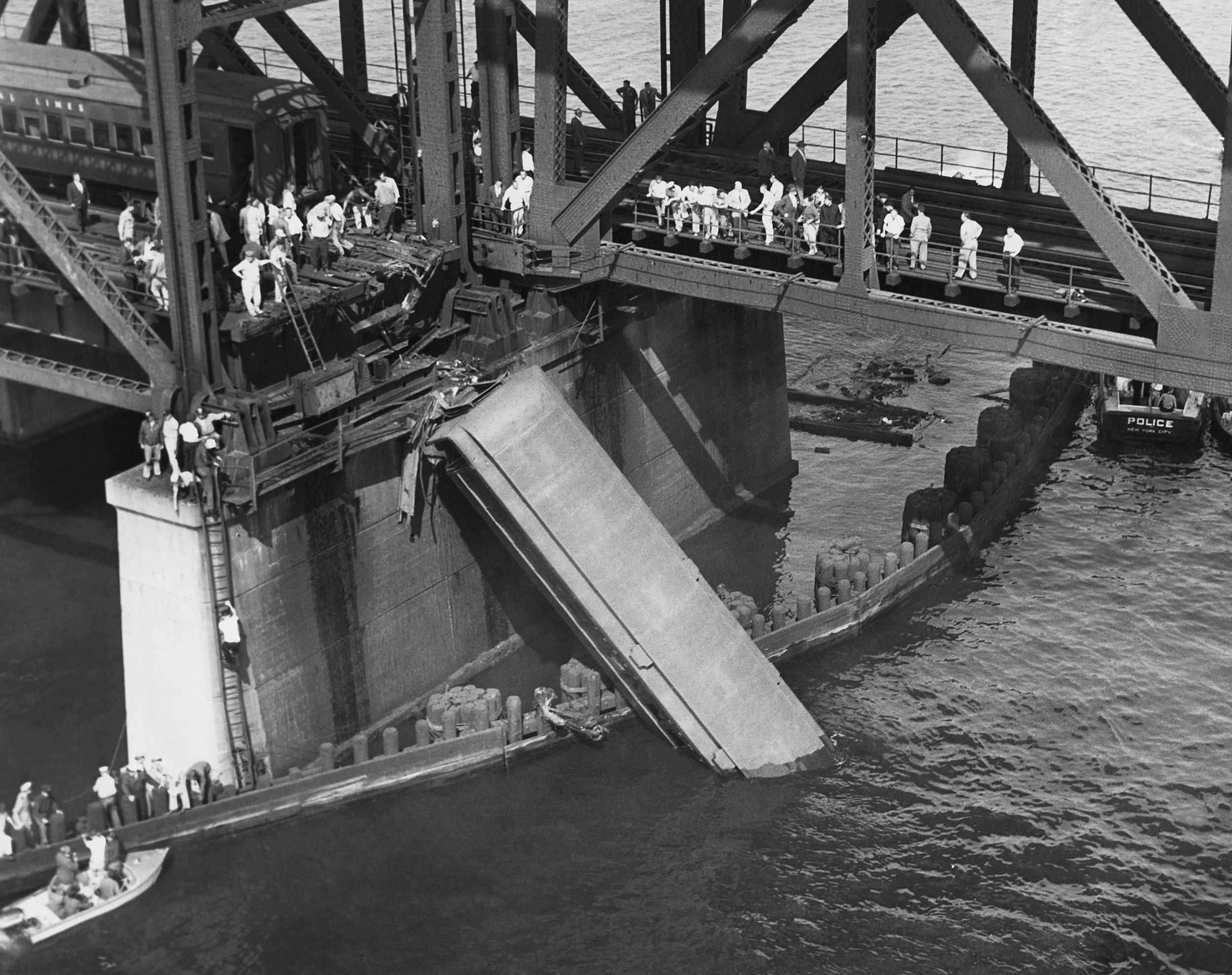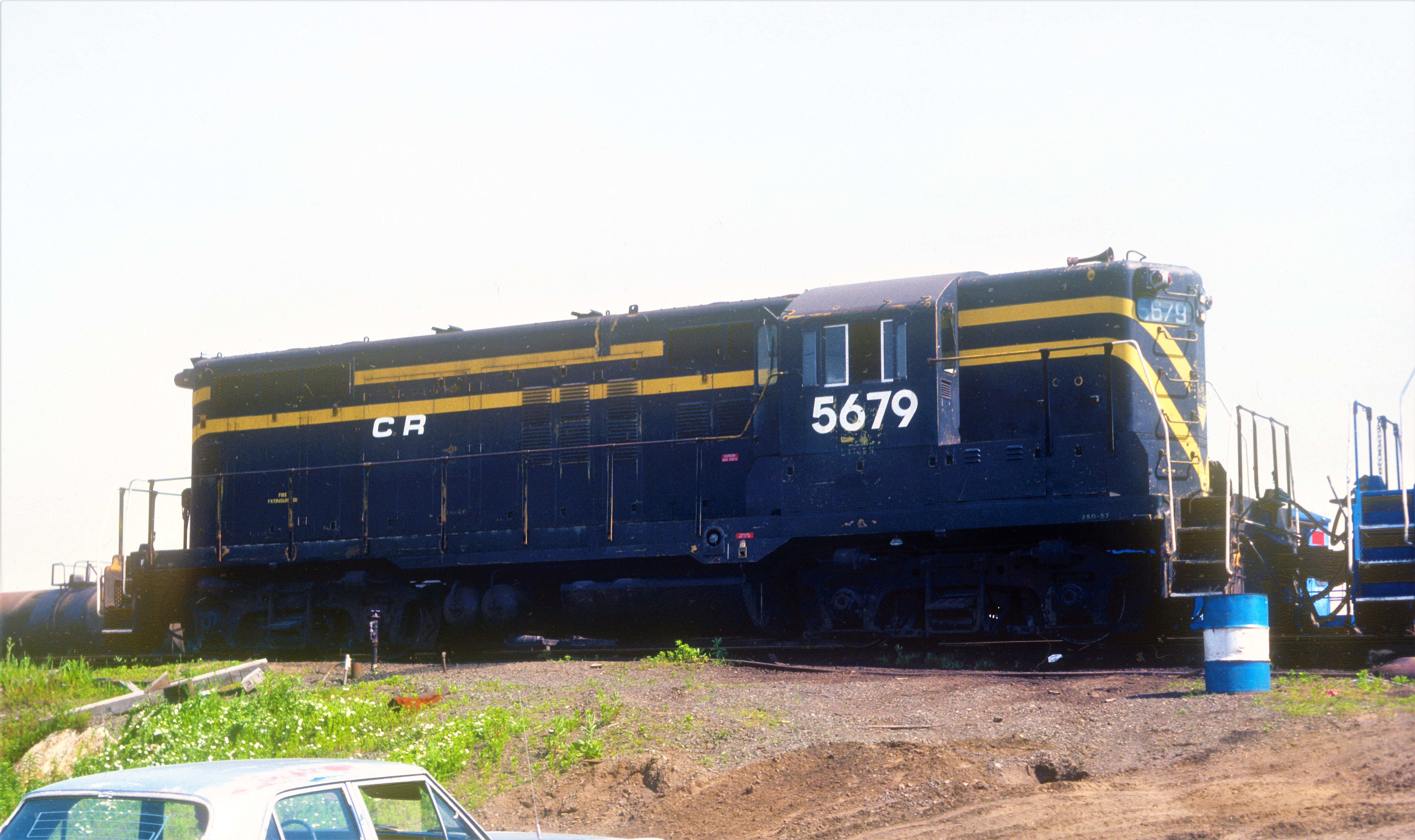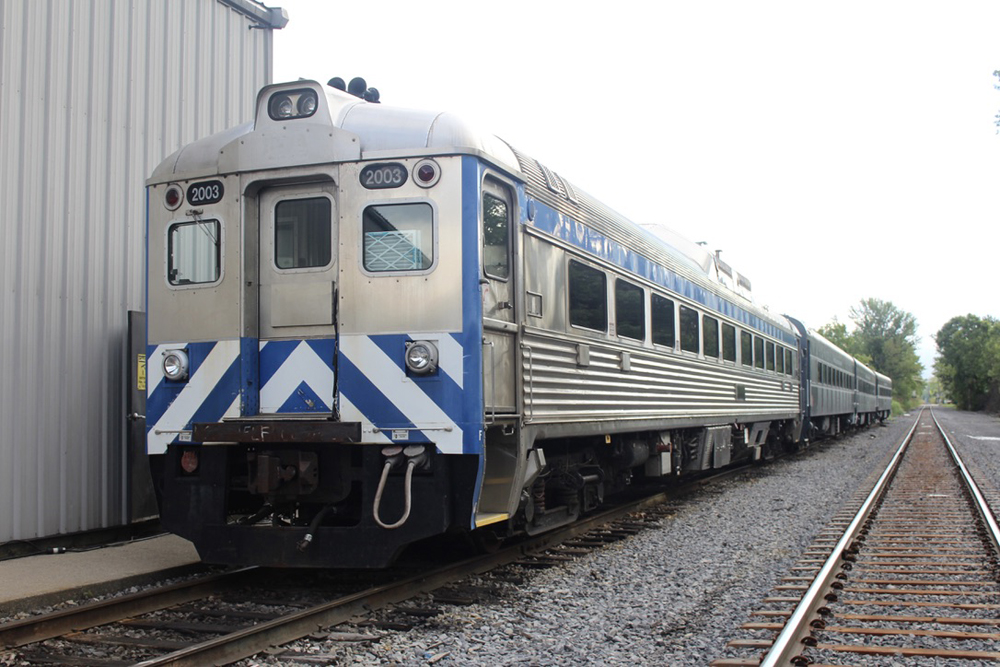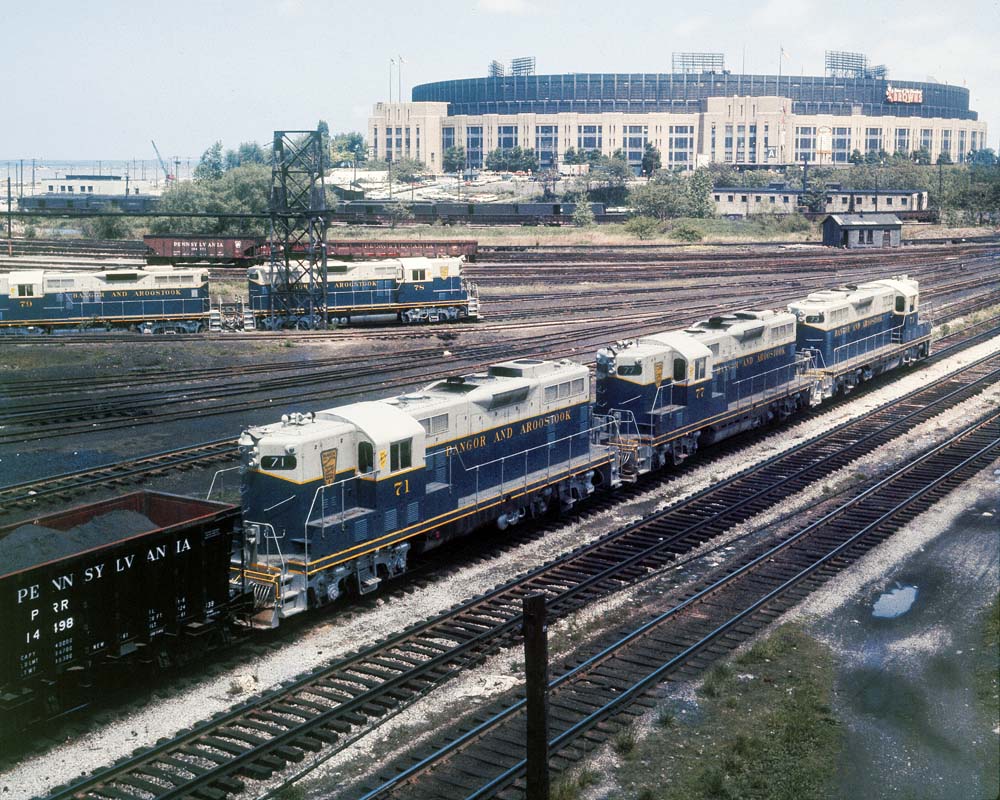That Newark Bay Bridge was the site of a pretty horrific incident on September 15th, 1958. The lift-span bridge had three signals, spaced at 3⁄4 of a mile , 1⁄4 mile of a mile, and 500 feet from the bridge, and an automatic derailing device 50 feet beyond the third signal. The bridge span had to be down and locked electrically before the signals and derail could be cleared for movement on the track, and also all the devices had to be in their most restrictive positions before the bridge could be unlocked and raised.
CNJ train number #3314 was a morning commuter service from Newark to Manhattan consisting of two CNJ GP7s, #1532 and #1526, and five passenger cars, with 63 year old Lloyd Wilbur as engineer and 42 year old Peter Andrew as fireman. At approximately 9:45AM, a dredge approached Newark Bay, and since it wouldn’t fit through the 35ft gap below the lowered bridge, an order to raise the lifts was issued. The control center, located in the middle of the bridge between the lifts, turned all the approach signals red, engaged the derail, and raised the lifts up just as CNJ train #3314 approached the bridge from the west at 40mph. The approach signal for the bridge dictated a 20mph speed limit, standard for an approach to a red signal.
By 10:00am the train entered the western side of the bridge, still traveling at 40mph, and disregards the red signals. At the same time the dredger for which the bridge was opened reaches the lifts. CNJ train #3314 hit the derailer at full speed, never making a speed reduction or attempting to slow, and while derail did work, the train's higher speed it carries on right to the end of the fixed section of the bridge. It ran out of bridge, fell over the edge, and plunged 40ft down into Newark Bay, narrowly missing the dredge. The second locomotive follows the leading unit, and pulls the first two passenger cars to their doom. The third car, tearing off the car in front, tips over the edge but is saved by its rear truck becoming stuck on the edge, leaving it dangling from the edge of the bridge at a steep angle. The two locomotives and leading two passenger cars sink in an instant, disappearing below the water as soon as they fall in. 46 passengers drown in the leading two passenger cars, along with the both the crew in the leading locomotive. Another 48 passengers are injured as they escape the submerged train cars or the third car as it dangles from the edge.
All passengers in the third car manage to climb to safety, making it onto the bridge as the first responders arrive by boat or by running up the bridge on foot. The rear truck of the third eventually gives out, dropping the car into the bay 2 hours after the accident. Divers go down to the wreckage to count victims, while other responders search the shore downstream for further victims and survivors. They didn’t find anyone, since those who had died hadn’t even left the train. It’s assumed that most passengers likely didn’t know that something was wrong right up until the train hit the water.


The The ICC, Army Corp of Enginers and New Jersey Public Utilities Commission all conduct separate investigations, and the bridge operator was found to have done his job properly, and the signals and derails were in operating order. The derail failed to save the train simply because they hit it at twice the intended speed. They raised the wreckage and did not find any defect of the braking system on the locomotives and coaches. An autopsy found that the engineer had indications of hypertension, but he had died of asphyxia due to drowning. It was presumed that the engineer had somehow become incapacitated in the cab, but no reason could be found to explain why the fireman could not or did not step in to stop the train. The cause remains a mystery to this day.
All three investigations found that the absence of a dead man's switch was one primary cause of the crash. After the inquiries, the New Jersey Public Utilities Commission ordered the railroads to install such devices on all passenger locomotives operating in New Jersey. Some CNJ locomotives were already equipped with such devices, but this did not include the the lead engine, #1532 on the day of the wreck. The CNJ had previously claimed that such a device was not always necessary, because all their trains had two crewmen in the locomotive cab, and if the engineer was incapacitated somehow, the fireman would assume control of the locomotive, which obviously didn't happen in this case.
The two locomotives, #1532 and #1526 were raised, rebuilt by EMD into GP9s, and returned to service. The #1532 retained its original number, while the #1526 was renumbered #1531. They were regeared and had their passenger equipment removed and served primarily as freight locomotives, although #1532 was photographed in passenger service after its return from EMD and they were also seen hauling commuter runs early in the Conrail era. Both engines were renumbered into Conrail numbers, as #5678 and #5679, although I don't believe they ever wore Conrail blue and they were retired and scrapped in '84.

As for the bridge, it was in the news again on May 19th, 1966 when the French freighter S.S. Washington collided with the northeast lift span, rendering two tracks unusable. Despite an eventual judgment in CNJ's favor, the span was never repaired, as the two affected tracks were deemed redundant by the railroad due to the sharp decline in rail traffic and the impending Aldene Plan, which occurred less than a year after the accident, would also completely alter CNJ passenger operations. After the Aldene Plan went into effect in May 1967, the only passenger service on the bridge was the Bayonne-Cranford shuttle, known as the "Scoot". The last freight train crossed the bridge in 1976, prior to the formation of Conrail, and the last passenger train left Bayonne's Eighth Street Station on August 6, 1978. Demolition of the central lift spans began in July 1980 after the Coast Guard declared the structure a navigational hazard to ships. The trestle and approaches were removed in 1987–1988 and removal of the piers began in 2012.





































